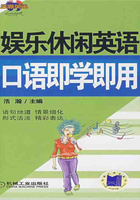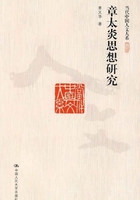A Band-Aid for a Broken Heart
佚名 / Anonymous
My husband, Hanoch, and I wrote a book Acts of Kindness: How to Create a Kindness Revolution, which has generated much interest across America. This story was shared with us by an anonymous caller during a radio talk show in Chicago.
“Hi, Mommy, what are you doing?” asked Susie.
“I’m making a casserole for Mrs. Smith next door,” said her mother.
“Why? ” asked Susie, who was only six years old.
“Because Mrs. Smith is very sad; she lost her daughter and she has a broken heart. We need to take care of her for a little while.”
“Why, Mommy?”
“You see, Susie, when someone is very, very sad, they have trouble doing the little things like making dinner or other chores. Because we’re part of a community and Mrs. Smith is our neighbor, we need to do some things to help her. Mrs. Smith won’t ever be able to talk with her daughter or hug her or do all those wonderful things that mommies and daughters do together. You are a very smart girl, Susie; maybe you’ll think of some way to help take care of Mrs. Smith.”
Susie thought seriously about this challenge and how she could do her part in caring for Mrs. Smith. A few minutes later, Susie knocked on her door. After a few moments Mrs. Smith answered the knock with a “Hi, Susie.”
Susie noticed that Mrs. Smith didn’t have that familiar musical quality about her voice when she greeted someone.
Mrs. Smith also looked as though she might have been crying because her eyes were watery and swollen. “What can I do for you, Susie?” asked Mrs. Smith.
“My mommy says that you lost your daughter and you’re very, very sad with a broken heart.” Susie held her hand out shyly. In it was a Band-Aid. “This is for your broken heart.” Mrs. Smith gasped, choking back her tears. She knelt down and hugged Susie. Through her tears she said, “Thank you, darling girl, this will help a lot.”
Mrs. Smith accepted Susie’s act of kindness and took it one step further. She purchased a small key ring with a plexiglass picture frame—the ones designed to carry keys and proudly display a family portrait at the same time. Mrs. Smith placed Susie’s Band-Aid in the frame to remind herself to heal a little every time she sees it. She wisely knows that healing takes time and support. It has become her symbol for healing, while not forgetting the joy and love she experienced with her daughter.
我和丈夫汉诺奇写了一本书——《善行:如何开展一次善行革命》,许多美国人都对它产生了浓厚的兴趣。下面这个故事是在芝加哥电台的一个脱口秀节目中,一位匿名的听众在电话中与我们分享的。
“你在干什么呢,妈妈?”苏茜问。
母亲回答说:“我在为隔壁的史密斯太太做一个焙盘。”
仅有六岁的苏茜问:“为什么?”
“因为史密斯太太非常悲伤,她失去了女儿,心都碎了。这段时间我们应该好好照顾她。”
“为什么,妈妈?”
“瞧,苏茜,当有人非常非常沮丧时,他们就会在一些小事上出问题,比如做饭或是做其他家务。我们应该做一些事来帮助她,因为我们都是社区的一分子,而且史密斯太太是我们的邻居。史密斯太太再也无法跟她的女儿聊天或是拥抱了,再也无法做那些母女俩一起做的快乐的事了。苏茜,你是一个聪明伶俐的女孩,或许你能想出方法来帮助照顾史密斯太太。”
苏茜认真地想着,怎样才能为史密斯太太做点事呢。几分钟后,苏茜敲了敲她的门。过了一会儿,史密斯太太开门应道:“苏茜,你好。”
苏茜发现,当史密斯太太问候他人时,声音不再像以前那么悦耳动听了。
而且看起来,史密斯太太可能一直在哭,因为她的眼睛又湿又肿。“有事吗,苏茜?”史密斯太太问道。
“我妈妈说您因为失去了女儿而非常非常悲伤,心都碎了。” 苏茜胆怯地把手伸了出来,那是一个创可贴。“这个用来治疗您破碎的心。”史密斯太太强忍住泪水,呜咽着。她蹲了下来,紧紧地拥抱着苏茜,泪流满面地说,“谢谢你,亲爱的小姑娘,这对我帮助很大。”
史密斯太太不仅接受了苏茜的善行,而且非常珍视。她买了一个有树脂玻璃框的小钥匙扣,它可以挂钥匙,同时也可以放家人的相片。为了能随时看到苏茜的创可贴,史密斯太太把它放进了镜框里,这样就可以时刻告诉自己要快快康复。她非常明白恢复心灵的创伤是需要时间和帮助的。这个创可贴成了她康复的标志,而她也不会忘记曾经和女儿共同拥有的喜悦与爱。
记忆填空
1. Smith is our , we need to do some to help her. Mrs. Smith won’t ever be able to with her daughter or hug her or do all wonderful things that mommies and daughters do .
2. Susie that Mrs. Smith didn’t have that familiar musical quality about her when she greeted someone.
3. Mrs. Smith Susie’s Band-Aid in the frame to remind to heal a little every time she sees it. She wisely that healing takes time and support.
佳句翻译
1. 苏茜认真地想着,怎样才能为史密斯太太做点事呢。
2. 我妈妈说您因为失去了女儿而非常非常悲伤,心都碎了。
3. 这个创可贴成了她康复的标志,而她也不会忘记曾经和女儿共同拥有的喜悦与爱。
短语应用
1. ...they have trouble doing the little things like making dinner or other chores.
have trouble doing:做……有困难
2. ...the ones designed to carry keys and proudly display a family portrait at the same time.
at the same time:同时;然而














